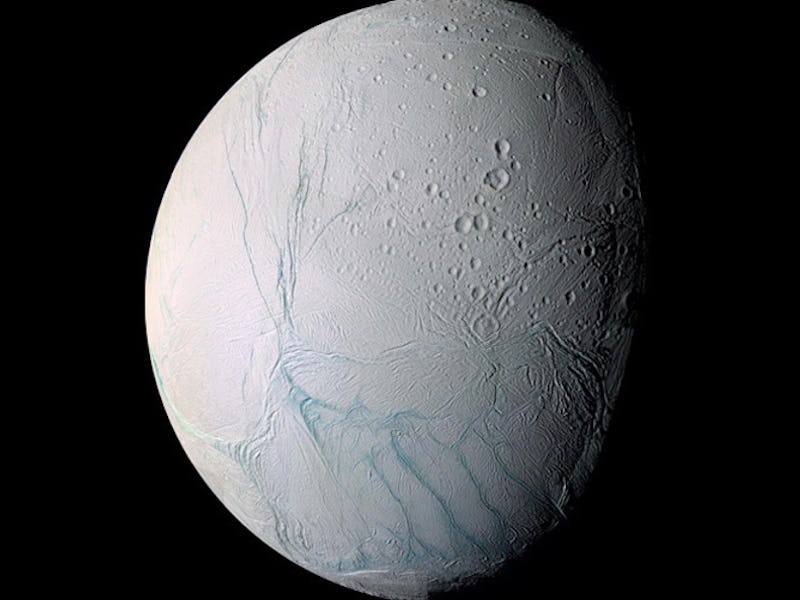
One of Saturn’s 60 confirmed moons may hold the most promise of being Earth-like, according to an announcement from NASA.
The icy moon Enceladus, pronounced EN-SELL-AH-DUS, has quickly risen to potential habitable status thanks to the Cassini spacecraft, which first discovered large icy plumes spouting from its surface.
Clocking in at 157 miles in radius and just under the width of Arizona, it’s undeniably tiny. The icy plumes shoot at a staggering velocity of 800 mph and contain carbon dioxide, carbon monoxide, salts, and silica. Scientists believe the moon has an ocean hidden 20 miles below its solid ice surface; based off their calculations of the moon’s orbit, the ocean could be six miles deep and likely contains microbial life.
Enceladus has multiple types of terrain, ranging from craters that could be over 20 miles deep, to fissures, plains, corrugated terrain, and geysers that are all likely connected to the liquid interior. Deep crevices, also known as “tiger stripes,” also traverse the surface, which scientists say is due to water vapor escaping the interior.
The icy terrain reflects 100 percent of the sunlight that illuminates it, making it one of the brightest objects in our solar system. But, because it doesn’t absorb any sunlight, it is estimated that the surface of the moon is negative 330 degrees Fahrenheit, which is why it is so mind boggling that it isn’t frozen to the core. Scientists suspect this might be because of a tidal mechanism that heats the core, similar to Jupiter’s moon Io.
Enceladus glides along one of Saturn’s outermost rings, the E ring, and it completes an orbit every 32.9 hours. It is also tidally locked, meaning one side always faces Saturn. This could be where it is getting its heat source, which would also explain the geysers.
Could we live on the planet, though? That, NASA says, would require a mission.